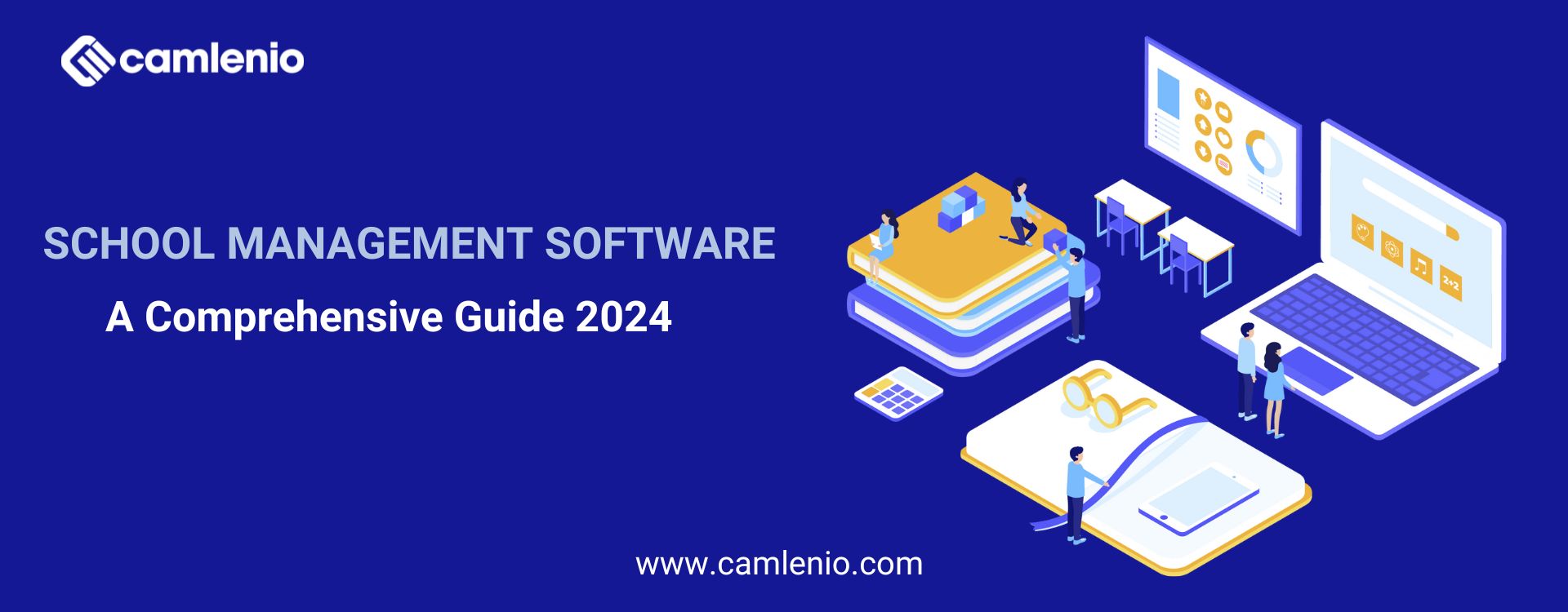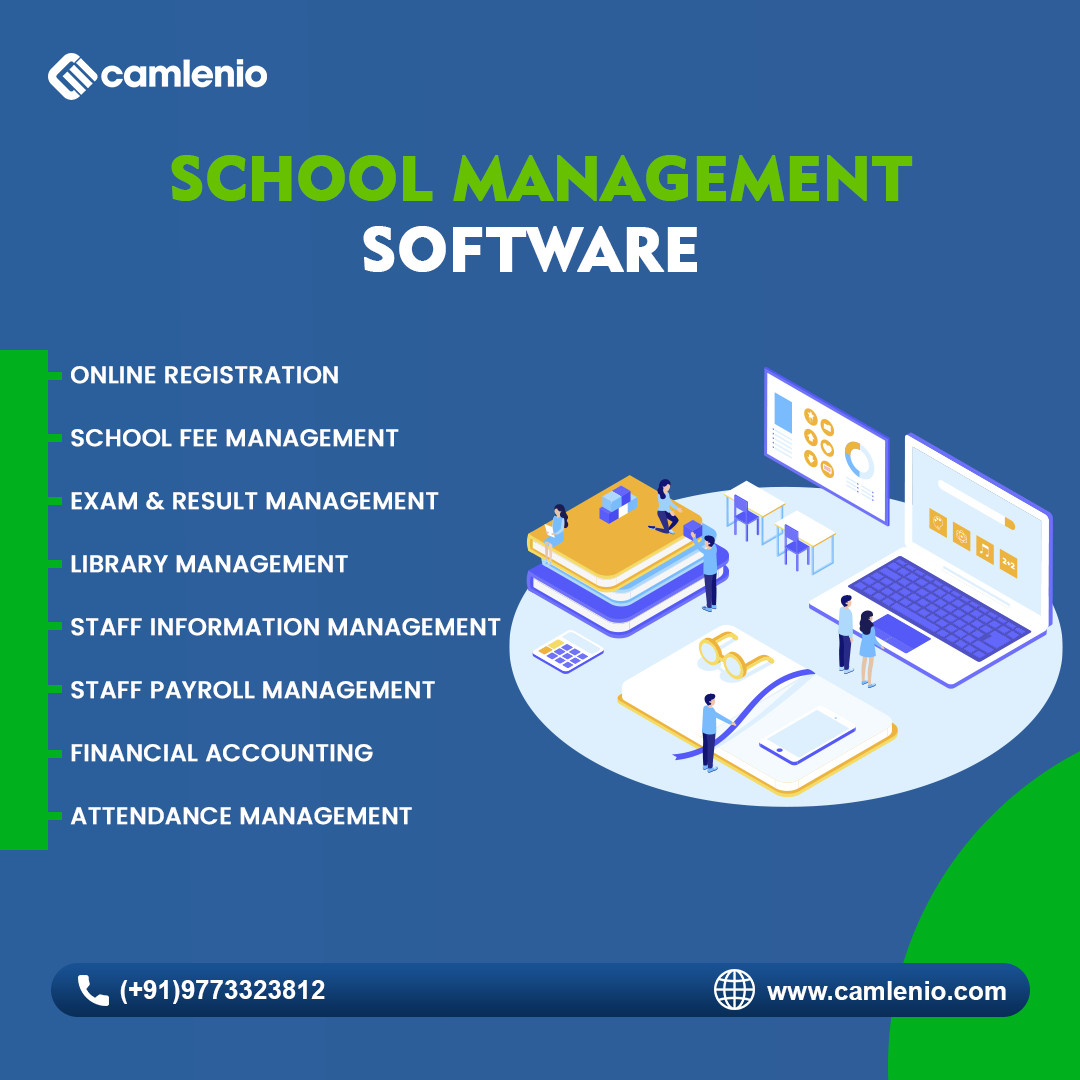
School management software (SMS) has become an integral part of modern educational institutions, streamlining administrative tasks and improving overall efficiency. With the increasing complexity of school operations, the demand for robust SMS solutions continues to rise. In this comprehensive guide, we’ll explore the key features, benefits, and considerations for choosing the best school management software in 2024.
Table of Contents
ToggleIntroduction to School Management Software
School Management Software (SMS) is a digital solution designed to streamline the administrative, academic, and financial functions of educational institutions. It aims to simplify and automate various processes, including student enrollment, attendance tracking, timetable scheduling, exam management, fee collection, and report generation. SMS provides a centralized platform for schools, colleges, and universities to manage their day-to-day operations efficiently.
One of the key features of SMS is student information management, which includes maintaining records of student demographics, academic performance, attendance history, and disciplinary actions. This information can be accessed by authorized personnel, such as teachers, administrators, and parents, to monitor student progress and address any issues promptly.
Benefits of Using School Management Software
- Efficient Administration: School management software automates various administrative tasks such as admissions, attendance tracking, timetable creation, and fee management. This reduces the workload on administrative staff, allowing them to focus on more critical tasks.
- Improved Communication: The software facilitates communication between teachers, students, parents, and administrators through features like messaging, announcements, and online portals. This improves transparency and keeps all stakeholders informed about important updates and events.
- Enhanced Parent-Teacher Collaboration: School management software provides parents with easy access to their child’s academic progress, attendance records, and other relevant information. This encourages parental involvement in their child’s education and fosters a positive relationship between parents and teachers.
- Accurate Data Management: The software maintains a centralized database of student information, including academic records, attendance, and health records. This ensures data accuracy and eliminates the need for manual record-keeping, reducing the chances of errors.
- Time and Cost Savings: By automating routine tasks, school management software saves time and reduces administrative costs. This allows schools to allocate resources more efficiently and focus on providing quality education.
- Enhanced Academic Performance: The software provides teachers with tools for tracking student performance, identifying areas for improvement, and providing personalized feedback. This helps improve academic outcomes and student engagement.
- Secure Information Management: School management software ensures the security and confidentiality of student information through robust data encryption and access controls. This protects sensitive information from unauthorized access or data breaches.
- Streamlined Admission Process: The software simplifies the admission process by providing online application forms, document submission, and payment options. This reduces paperwork and makes the admission process more convenient for both students and administrators.
- Improved Decision-Making: The software provides administrators with insights and analytics on various aspects of school operations, such as student performance, attendance trends, and resource utilization. This helps in making informed decisions to enhance overall efficiency and effectiveness.
- Scalability and Flexibility: School management software is designed to accommodate the evolving needs of educational institutions, making it scalable and flexible. It can be customized to suit the specific requirements of different schools, ensuring optimal performance.
Factors to Consider When Choosing School Management Software
- Features and Functionality: Look for software that offers a comprehensive set of features such as student information management, attendance tracking, grade book management, parent communication tools, and scheduling capabilities. It should also integrate well with other systems like accounting software and learning management systems.
- User-Friendliness: The software should be intuitive and easy to use for teachers, administrators, parents, and students. A user-friendly interface can significantly reduce training time and ensure that everyone can easily access the information they need.
- Customization Options: Every school has unique needs and workflows. The software should offer customization options to tailor the system to your specific requirements, whether it’s customizing report templates or adding new modules.
- Scalability: Choose software that can grow with your institution. It should be able to handle increasing numbers of students, staff, and courses without compromising performance or usability.
- Data Security and Privacy: Ensure that the software complies with data protection regulations and offers robust security features to protect sensitive information such as student records and financial data.
- Integration Capabilities: The software should seamlessly integrate with other systems used by the school, such as accounting software, learning management systems, and student information systems, to avoid duplication of effort and ensure data consistency.
- Support and Training: Look for a vendor that offers excellent customer support and training resources. This is crucial for resolving issues quickly and ensuring that users can make the most of the software’s capabilities.
- Cost: Consider the total cost of ownership, including initial setup costs, subscription fees, and any additional costs for customization or training. Compare pricing plans from different vendors to find the most cost-effective solution.
- Feedback and Reviews: Read reviews and get feedback from other schools that have used the software. This can provide valuable insights into the software’s strengths and weaknesses and help you make an informed decision.
- Future Upgrades and Updates: Ensure that the software vendor regularly updates the software with new features and improvements. This will help you stay up-to-date with the latest technology trends and ensure that your software remains relevant in the long run.
Implementation of School Management Software
- Needs Assessment: Begin by conducting a comprehensive needs assessment to understand the specific requirements of your school. Identify the key areas where the SMS can bring value, such as student admissions, attendance tracking, academic performance monitoring, and communication with parents.
- Select the Right Software: Choose an SMS that aligns with your school’s requirements and budget. Consider factors such as scalability, user-friendliness, customer support, and integration capabilities with existing systems.
- Create an Implementation Team: Form a dedicated team that will oversee the implementation process. This team should include representatives from different departments, such as administration, academics, IT, and finance.
- Customization and Configuration: Work closely with the SMS provider to customize the software to meet your school’s specific needs. Configure the software settings, user roles, and permissions accordingly.
- Data Migration: Transfer data from your existing systems to the new SMS. Ensure that the data is accurate, complete, and compatible with the new system. This may involve migrating student records, staff information, academic calendars, and other relevant data.
- Training: Provide comprehensive training to staff members on how to use the new SMS. This should include training on basic functionalities, advanced features, and best practices for efficient use of the software.
- Pilot Testing: Conduct a pilot test of the SMS with a small group of users to identify any issues or areas for improvement. Gather feedback from users and make necessary adjustments before rolling out the software to the entire school.
- Rollout and Adoption: Once the pilot testing is successful, rollout the SMS to the entire school. Encourage and support staff members in adopting the new system by providing ongoing training and assistance.
- Monitoring and Evaluation: Continuously monitor the performance of the SMS and its impact on school operations. Collect feedback from users, identify areas for improvement, and make necessary adjustments to optimize the software’s performance.
- Integration with Other Systems: Integrate the SMS with other systems used by the school, such as accounting software, student information systems, and learning management systems. This will ensure seamless data flow and improve overall efficiency.
- Support and Maintenance: Provide ongoing support and maintenance for the SMS to ensure its smooth functioning. Address any issues or technical glitches promptly to minimize disruptions to school operations.
- Feedback and Improvement: Gather feedback from users on a regular basis to identify areas for improvement. Work closely with the SMS provider to implement updates and enhancements that will further enhance the software’s effectiveness.
Read More : https://camlenio.com/blogs/best-hrms-software-company-in-india/
Future Trends in School Management Software
- Integration of AI and Machine Learning: AI and machine learning are revolutionizing school management software by enabling predictive analytics, personalized learning paths, and more efficient administrative processes. These technologies can analyze data to identify patterns and trends, helping schools make data-driven decisions.
- Cloud-Based Solutions: Cloud-based school management software offers scalability, flexibility, and accessibility. Schools can access their data from anywhere, on any device, and software updates are automatically implemented, reducing IT maintenance costs.
- Mobile Applications: Mobile apps are increasingly important in school management software, providing parents, teachers, and students with easy access to information such as attendance records, grades, and communication tools. Mobile apps also facilitate quick communication between stakeholders.
- Data Security and Privacy: With the increasing use of technology in schools, data security and privacy have become major concerns. Future trends in school management software will focus on implementing robust security measures to protect sensitive information.
- Personalized Learning: School management software is moving towards providing personalized learning experiences for students. By analyzing data on student performance and learning styles, software can suggest personalized learning paths and resources.
- Automation of Administrative Tasks: Automation of routine administrative tasks such as attendance tracking, fee collection, and report generation frees up time for teachers and administrators to focus on more important tasks, improving overall efficiency.
- Parent-Teacher Communication Tools: Future school management software will offer enhanced communication tools for parents and teachers, such as instant messaging, notifications, and scheduling features, to facilitate better collaboration and engagement.
- Data Analytics for School Improvement: School management software will increasingly focus on providing data analytics tools to help schools identify areas for improvement, track progress towards goals, and make informed decisions based on data.
- Gamification: Gamification is being integrated into school management software to make learning more engaging and interactive. Features like leaderboards, badges, and rewards can motivate students to actively participate in their education.
- Virtual Reality and Augmented Reality: As these technologies become more accessible, they are being integrated into school management software to create immersive learning experiences. Virtual field trips, interactive simulations, and 3D models can enhance learning outcomes.
conclusion
In conclusion, selecting the right school management software is crucial for educational institutions aiming to streamline their administrative tasks, enhance communication, and improve overall efficiency. As technology continues to advance, these software solutions offer a wide range of features and benefits, from student information management to online learning tools and parent-teacher communication platforms.
When choosing a school management software, it’s essential to consider factors such as ease of use, scalability, customization options, and customer support. By investing in the right software, schools can not only save time and resources but also provide a better learning experience for students, teachers, and parents alike.
FAQs
- What is school management software? School management software is a digital solution designed to automate and manage various administrative tasks in educational institutions.
- What are the benefits of using school management software? Benefits include streamlining administrative tasks, improving communication, enhancing parental involvement, and enabling better data management and analysis.
- What are the key features to look for in school management software? Key features include student information management, attendance tracking, gradebook and report card generation, fee management, timetable management, and communication tools.
- What types of school management software are available? Types include cloud-based vs. on-premises and open-source vs. commercial.
- What factors should be considered when choosing school management software? Factors include budget, scalability, user
